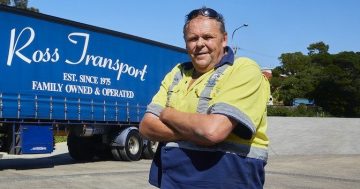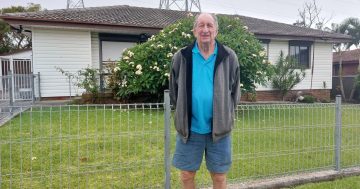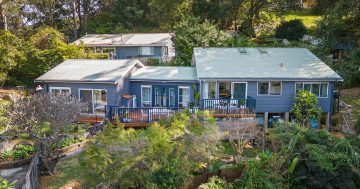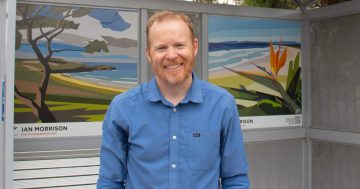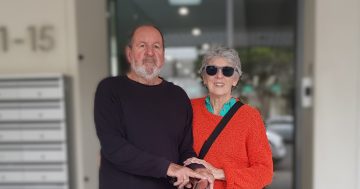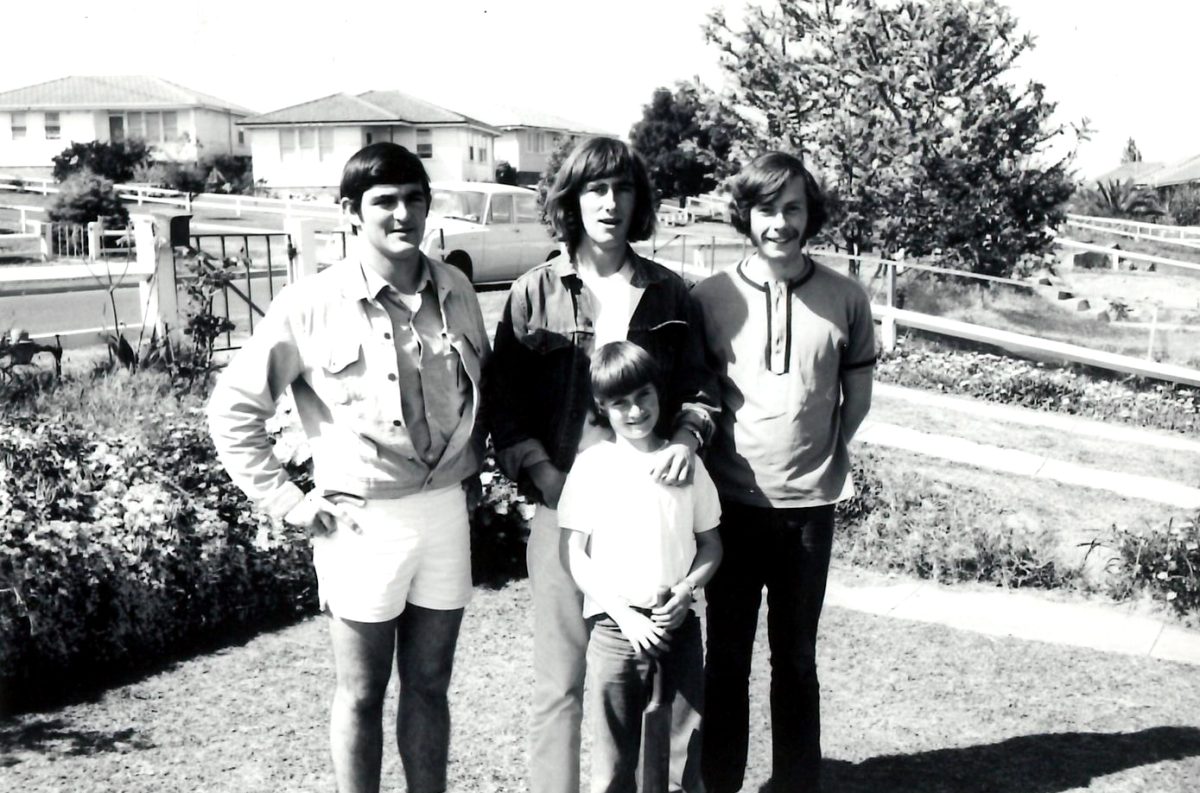
Graeme Morrison (centre, aged about 15) on the Lake South housing estate where he grew up. Photo: Supplied.
For many of the Illawarra’s iconic mid-century fibro homes, the wrecking ball is swinging.
Bulldozers can be seen throughout the region moving in on condemned and dilapidated fibro shells to make way for modern high-density units and townhouses.
When the NSW Housing Commission was established in the early 1940s, the ability to build cheap and sturdy fibro homes at a time when building materials were scant was a godsend.
It provided solid, affordable rental housing for tens of thousands of needy families – particularly returned soldiers and migrant workers arriving to fill the labour shortage.
Those humble homes and what they contributed to a cohesive society form one of the significant chapters in our social and architectural history.
Despite the asbestos health scare years later, many people who grew up on the early estates have nothing but fond memories.
In 1967, Wollongong solicitor, Graeme Morrison, then aged nine, moved into the Lake South Housing Commission estate with his parents and two younger siblings.
“Back then, teachers like my father were entitled to public housing when they moved to new areas,” he says.
“We had a terrific childhood with loads of freedom and friends, whose families had come from all over the world, some of whom I’m still in touch with today.
“Nobody had much money, but that didn’t matter because we made our own fun. We had unbelievable freedom to roam the streets or head off to the beach.
“I remember days when a few of us would pretend to be ninjas and throw the fibro cuttings from nearby construction work at each other.
“We’re all in our 70s now and still in one piece.
“My two best mates were from Germany and Italy; I loved eating at their place – I discovered wonderful things like schnitzel and pasta, but they rarely came to mine because Mum wasn’t much of a cook.”
Graeme believes the egalitarian and harmonious environment he grew up in shaped the lawyer he is today.
“It probably helped all us kids on the estate to be compassionate and accepting of others,” he says.
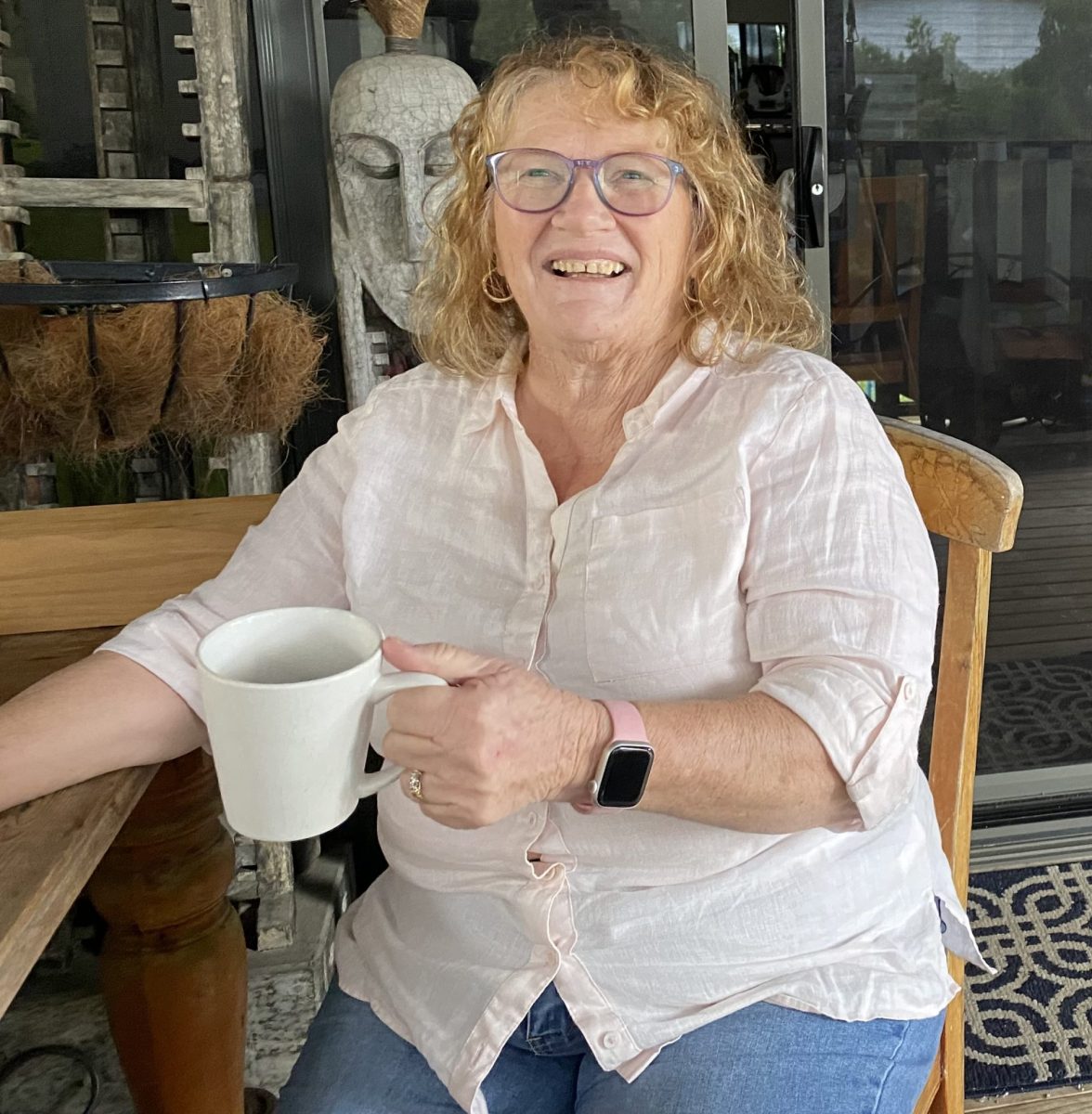
Marianne Saliba has fond memories of growing up in a “safe and happy environment” at Warilla. Photo: Supplied.
Former state member for Illawarra and Shellharbour mayor, Marianne Saliba, 64, was four when her family migrated to Australia from Scotland with her five siblings.
Her family moved into the same estate when it extended into Warilla.
“We had terrific fun doing all sorts of stuff – hopscotch, bushwalking, and horse riding – and we’d be out in the morning and back before the lights went on in the afternoon,” she says.
“I remember it as a safe and happy environment, where families all knew and looked after each other, so much so that we never locked our doors.
“Dad started work at Lysaghts, but he moved around because work was plentiful and he was a jack-of-all-trades.
“We were well looked after, but we never got new toys or anything like that. For Christmas, for example, often it was, say, a bike Dad picked up at the tip and repaired.
“Our biggest thrill was in 1974, when we became the first family to get a colour television … we’d often have a houseful of kids at our place with eyes glued to the screen,” Marianne says with a laugh.
“I’ve always said that upbringing gave me a sense of resilience, which is something that can only come from experience.”
One of the aims of the housing estates was to provide families with a bridge to home ownership.
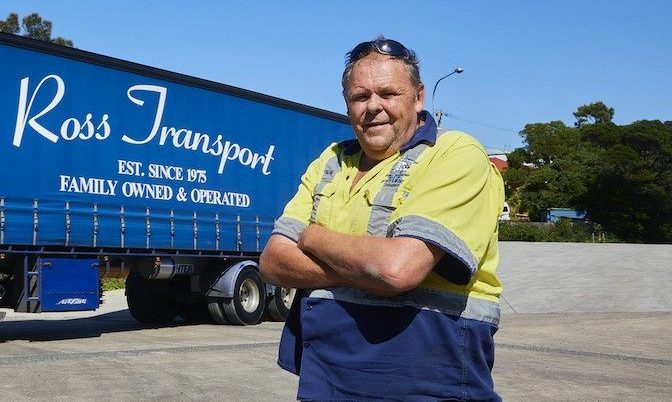
Alan Ross, CEO of Ross Transport. Photo: Supplied.
That’s exactly what it did for Alan Ross’s family in 1962, before they went on to build one of Illawarra’s biggest trucking companies.
“I’ve got great memories of growing up in a fibro Commission house at Warilla,” Alan says.
“We spent 10 years on that estate before my parents bought their own house at Oak Flats when I was 12.
“We lived among every nationality you could think of, and everybody got on well.
“Everybody had jobs, and we were all expected to keep the properties tidy – if one of the tenants didn’t mow the grass, council would send somebody out to do it for a fee.”
The quality of the home was entirely satisfactory, says Alan.
“It was more than adequate,” he says. “In fact, the house we ended up moving into at Oak Flats wasn’t much better than what we had left,” he says.









